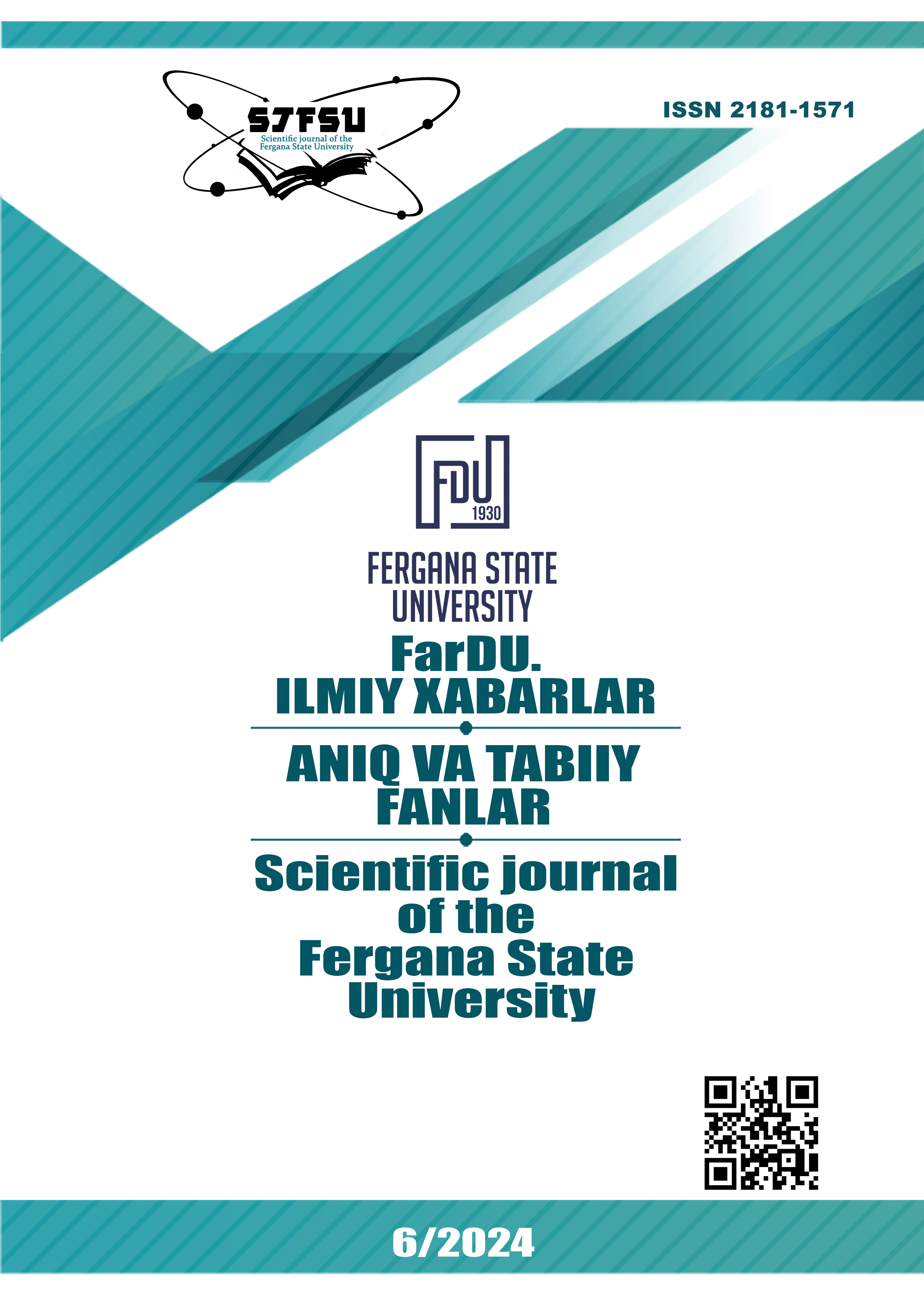THE USE OF DIFFERENT APPROACHES AND A SYSTEMATIC APPROACH IN THE USE OF LANDSCAPES
Keywords:
landscapes, approach, use, anthropogenic, theoretical, environmental, ecological, methods, protected areas.Abstract
The article talks about landscapes and its diversity, as well as prospects for its use. Also, the role, fundamental and practical importance of the landscape in the system of geographical knowledge is analyzed, and the main methods of determining the specific aspects of the approaches to the use of landscapes are emphasized. The various approaches are covered, but they all serve the human factor. In addition, proposals for environmental protection are presented.
References
Беручашвили Н.Л. Методы комплексных физико- географических исследований / Н.Л.Беручашвили, В.К.Жучкова. – М.: Изд-во МГУ, 1997. – 320 с https://core.ac.uk/download/pdf/76001805.pdf
Abdulqosimov A., Yarashev K., Meliyev B. Landshaft komplekslarini kartalashtirishning dolzarb muammolari // Samarqand davlat universiteti ilmiy tadqiqotlar axborotnomasi. 1-son (95). – Samarqand, 2016. 100-104 b.
Jeffrey Sayera,1, Terry Sunderlandb, Jaboury Ghazoulc, Jean-Laurent Pfundd, Douglas Sheilb,e,f, Erik Meijaardb,g,h, Michelle Ventera , Agni Klintuni Boedhihartonoa , Michael Dayb , Claude Garciab,i, Cora van Oostenj , and Louise E. Buckk. “Ten principles for a landscape approach to reconciling agriculture, conservation, and other competing land uses” SPECIAL FEATURE: PERSPECTIVE. Proceedings of the National Academy of Sciences May 2013. Improvement and Implementation of a High Performance CQRS Architecture
https://ieeexplore.ieee.org/document/8101372
Konvey, GR (1985). Agroekotizim tahlili. Qishloq xoʻjaligi boshqarmasi, 20(1), 31–55. https://doi.org/10.1016/0309-586X(85)90064-0
Hilborn.R., Walters.CJ va Ludwig.D. (1995). Qayta tiklanadigan resurslardan barqaror foydalanish. Ekologiya va sistematikaning yillik sharhi, 26 (1),45-67. https://doi.org/10.1146/annurev.es.26.110195.000401
Mark Antrop Geografiya boʻlimi, Gent universiteti, 281 Krijgslaan, S8, B-9000 Gent, Belgiya, marc.antrop@rug.ac.be
Родоман Б.Б. «Поляризованный ландшафт»: полвека спустя // Известия Российской академии наук. Серия географическая. 2002. № 3. С. 467–480.
Баранов В.А. «Теоретические основы экологической оптимизации ландшафта» Электронный научно-практический журнал // Сельское, лесное и водное хозяйство. 2012. № 9 [Электронный ресурс]. URL: https://agro.snauka.ru/2012/09/520
Соколов А.С. “Ландшафтное разнообразие: теоретические основы, подходы и методы изучения”. https://cyberleninka.ru/article/n/landshaftnoe-raznoobrazie-teoreticheskie-osnovy-podhody-i-metody-izucheniya
Jakub Melicher, Jana Špulerová. “Application of Landscape-Ecological Approach for Greenways Planning in Rural Agricultural Landscape” Environments 2022,9,30. https://doi.org/10.3390/environments9020030 https://www.mdpi.com/journal/environments
Гвоздецкий Н.А. Основные проблемы физической географии. –М.: Высшая школа, 1979. –222 с. 91-109 с.
Xasanov P.A. “Tabiiy landshaftlarning antropogen modifikasiyalanishi va agrolandshaftlar o’rganilish tarixi”//Экономика и социум, г. Саратов, ул. Волжская, 28. №12 (115), 2023 www.iupr.ru
Jianguo Vu., Richard Xobbs. Landscape ecology: The-state-of-the-science. DOI:10.1017/CBO9780511618581.016 In book: Key Topics in Landscape Ecology (pp.271-287)
Sh. S. Zokirov, X. R. Toshov “Landshaftshunoslik” Toshkent. 2016. 130-138 b.
Назаров И.К. География фанининг асосий муаммолари. Муҳаррир. Тошкент-2013. 56 б.
www.eco.gov.uz
Downloads
Published
Issue
Section
License
Copyright (c) 2024 Scientific journal of the Fergana State University

This work is licensed under a Creative Commons Attribution-NonCommercial-NoDerivatives 4.0 International License.

